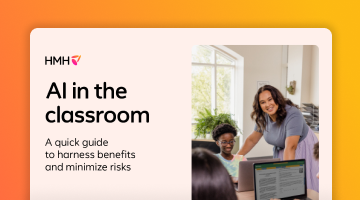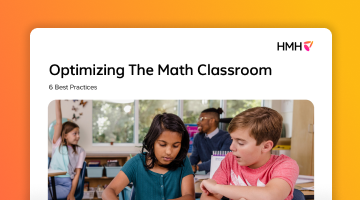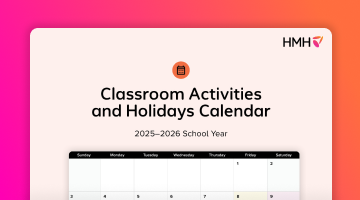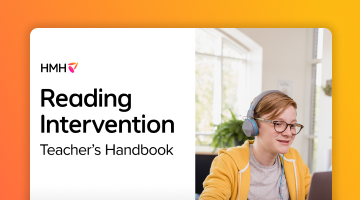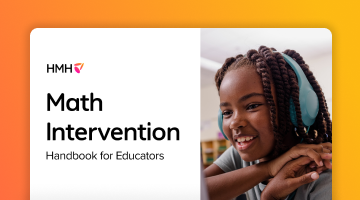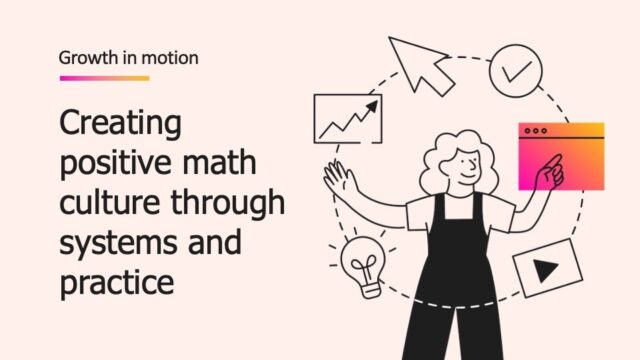
Full disclosure, and I won’t bury the lede: I am pro high-quality instructional materials (HQIM).
I didn’t used to be. For my first several years in the classroom, I believed the best curriculum for my students was the one I built myself.
As a teacher, I spent years Frankensteining resources: designing lessons from scratch, finding the perfect poem, selecting strategies from the “ghosts of professional learning past” folder, and even writing assessment items meant to mimic the state assessment. Not only that, but my classroom was also incredibly diverse, with monolingual students and multilingual learners and students from varied racial and ethnic backgrounds. Yet, even with all the complexity, I loved designing my own materials.
I loved the deep thinking, creativity, and flexibility that came with me being the designer, the seamstress, the tailor, and the diva walking the red carpet in the gown. But in reality, I was exhausted.
I stayed up late, writing lessons and units, convinced I had to build everything myself. I burned hours just looking for materials. Some days, I was scrambling just to patch together something engaging and rigorous. That was my normal.
Then, my district adopted a well-structured, research-backed curriculum—a truly good set of high-quality instructional materials. They aligned with standards, provided rigorous instruction, and were based on research. Those materials changed my teaching. Keep reading and I’ll share how.
HQIM don’t just support learning—they help shape the entire educational experience. For both students and teachers, high-quality instructional materials are the bedrock upon which effective, engaging, and equitable learning is built.
The impact on students
1. Foster comprehension and critical thinking
Reading is not just about recognizing words; it requires decoding and applying that skill to the context in which the text is situated: activating prior knowledge, deconstructing syntax for meaning, understanding vocabulary nimbly and flexibly, creating meaning, and inferring appropriately. High-quality instructional materials in reading and ELA help students develop the critical skills necessary for deeper comprehension. When students encounter well-structured texts and conceptually linked text sets, they are more likely to engage in higher-order thinking. These materials often include thought-provoking questions, challenging vocabulary, and texts that span a variety of genres. Each element encourages students to think critically and make connections beyond the text.
For example, literature-rich instructional materials provide students with exposure to diverse experiences, historical events, and perspectives. As students analyze complex characters, storylines, or poetry, they develop the ability to interpret and evaluate ideas more thoroughly. These skills are essential not only for academic success but also for becoming informed and engaged citizens in society. HQIM will have rich questions and texts that are linked conceptually, so students build knowledge, vocabulary, linguistic and vocabulary dexterity, and syntactical awareness.
2. Promote engagement through variety and relevance
Students need to see themselves reflected in the material they study, which is why having a wide range of texts covering different genres, cultures, and voices is crucial. High-quality materials offer students opportunities to explore texts that resonate with their lives, interests, and identities. This fosters a sense of ownership and connection to the learning process, motivating students to engage more deeply.
For example, a curriculum that offers a mix of classic literature, contemporary stories, poetry, and informational texts helps students see the full scope of the written word. This variety not only maintains their interest but helps them see how different forms of writing can communicate meaning in different ways. Moreover, when students find relevance in the material, they are more likely to take an active role in their learning, leading to better retention and application of the skills they acquire.
3. Differentiate instruction for all learners
High-quality instructional materials are essential for meeting the diverse needs of all learners, particularly in a classroom where students may have varying levels of ability and backgrounds in knowledge and languages. Effective instructional resources provide spiraled learning experiences, ensuring that all students, whether they are striving readers or advanced learners, can access the content and make meaningful progress.
For instance, materials that include explicit vocabulary support, graphic organizers, or text-dependent questions can help striving readers break down complex material into manageable chunks. At the same time, enrichment activities, extension projects, or more challenging texts can engage advanced learners and stretch their thinking. Check out this "Word Map" as one resource you can use.

When students are provided with materials that suit their individual learning needs, they are more likely to succeed. This differentiation also ensures that all students are growing, fostering a more inclusive and equitable learning environment.
The impact on teachers
1. Provide clear and structured guidance
For teachers, high-quality instructional materials serve as a roadmap for delivering effective lessons. These materials often include comprehensive teaching guides, lesson plans, and resources that outline clear objectives, strategies, and assessment methods. Materials can help teachers stay organized and focused, ensuring that they are covering the necessary content and skills while aligning with state or national standards. Plus, a good design supports teachers knowing when to pull in that perfect poem or activity, instead of designing it from the ground up.
Well-designed instructional resources also provide teachers with strategies for differentiating instruction and addressing the diverse needs of their students. As a teacher, I struggled mightily crafting robust text sets that had all the things: an appropriate range of text complexity, both quantitatively and qualitatively; texts that include fiction, nonfiction, poetry, and prose, all with text-dependent questions; scaffolded lessons on grammar, syntax, and vocabulary; and writing activities that built to a culminating task. HQIM provides all of the above and allows teachers opportunities to mold the materials to their own students’ instructional needs.
2. Support professional development
High-quality instructional materials often go beyond just offering lesson plans and activities; they also serve as professional development tools. Many high-quality resources include background information about the texts being studied, research on effective teaching practices, and tips for fostering literacy development. This allows teachers to deepen their understanding of the content and improve their instructional practices.
For example, teachers may have access to resources that explain how to teach reading comprehension strategies, how to use formative assessments to monitor student progress, or how to integrate writing into reading lessons. By providing these opportunities for professional growth, instructional materials contribute to teachers’ ongoing development.
3. Support teacher collaboration
Many high-quality instructional materials are designed with collaboration in mind. These materials often come with online platforms or teacher networks that allow educators to share best practices, discuss lesson implementation, and provide feedback. This sense of community can be invaluable in helping teachers feel more supported and less isolated, especially in challenging teaching environments.
Collaboration can also be critical for aligning curricula across grade levels or departments. High-quality instructional materials make it easier for teachers to collaborate on cross-curricular projects, integrate reading and writing instruction, and ensure that there is coherence in the progression of skills across grade levels. In the end, this shared understanding leads to more cohesive and effective teaching practices.
A dynamic learning environment for all
My teaching was changed for the better when my district adopted HQIM. Initially, I worried the materials would box me in and take away my creativity. Instead, it gave me something I hadn’t had before—a research-based and deeply connected structure to build from.
The way I used my time shifted to be more meaningful and student-centered. I spent the bulk of my time figuring out how to teach great short stories, poems, and plays instead of what stories, poems and plays to teach, what questions to ask of them, and how to teach them. My own experience with HQIM made me a believer in the power they can have in the classroom, and how they can foster both teacher and student success.
For students, these materials promote engagement, comprehension, and critical thinking, all of which are essential for academic achievement. For teachers, they provide structure, professional development, and collaborative opportunities that help them deliver effective instruction. Ultimately, the integration of high-quality instructional materials can improve learning outcomes and promote effective teaching practices—creating a dynamic and equitable learning environment for all.
***
HMH Into Reading has everything teachers need in one place to facilitate systematic and explicit whole- and small-group reading instruction.
Get our free guide to whole-group differentiated instruction today!

